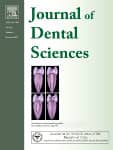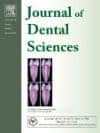
The study looked at 129 consecutive patients—54 males, 75 females; mean age 20.2 years old—with a total of 266 TADs of three different types. The study’s authors evaluated five variables related to TAD success: implant-related (type 1, type 2, and type 3 with different diameters and lengths), patient-related (sex, age, and type of malocclusion), location-related (jaw, site, side, bone quality, and the type of soft tissue), orthodontic-related (the timing of force application), and implant-maintenance factors (local inflammation around a TAD: mild, moderate, and severe).
The authors reported overall success rates of 97%. In addition, the clinical variable of all implant-related factors, all patient-related factors, and one of the location-related factors (side) did not show any statistically significant difference in success rates. The clinical variables of most location-related factors—jaw (mandible), site (lingual), bone quality (Q4), and the type of soft tissue around TADs (mucosa); orthodontic-related factors—timing of force application equal to 2 weeks; and implant-maintenance factors—local inflammation (mild-moderate and moderate-severe)—showed less success with statistically significant differences.









